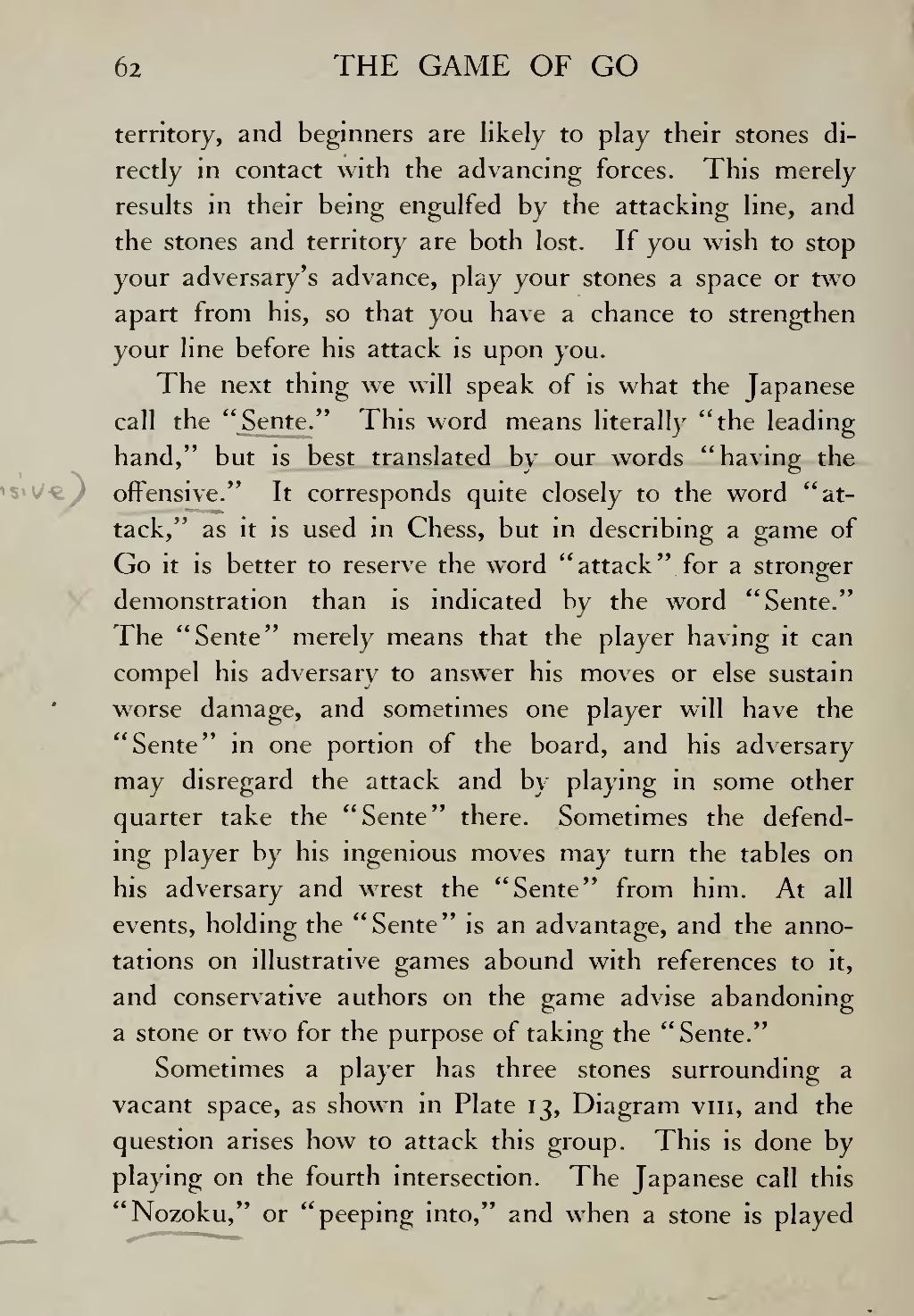territory, and beginners are likely to play their stones directly in contact with the advancing forces. This merely results in their being engulfed by the attacking line, and the stones and territory are both lost. If you wish to stop your adversary's advance, play your stones a space or two apart from his, so that you have a chance to strengthen your line before his attack is upon you.
The next thing we will speak of is what the Japanese call the "Sente." This word means literally "the leading hand," but is best translated by our words "having the offensive." It corresponds quite closely to the word "attack," as it is used in Chess, but in describing a game of Go it is better to reserve the word "attack" for a stronger demonstration than is indicated by the word "Sente." The "Sente" merely means that the player having it can compel his adversary to answer his moves or else sustain worse damage, and sometimes one player will have the "Sente" in one portion of the board, and his adversary may disregard the attack and by playing in some other quarter take the "Sente" there. Sometimes the defending player by his ingenious moves may turn the tables on his adversary and wrest the "Sente" from him. At all events, holding the "Sente" is an advantage, and the annotations on illustrative games abound with references to it, and conservative authors on the game advise abandoning a stone or two for the purpose of taking the "Sente."
Sometimes a player has three stones surrounding a vacant space, as shown in Plate 13, Diagram viii, and the question arises how to attack this group. This is done by playing on the fourth intersection. The Japanese call this "Nozoku," or "peeping into," and when a stone is played
